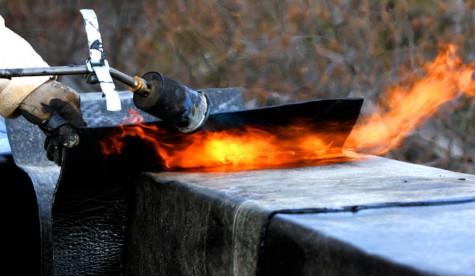Application of Waterproofing Torch On Membrane
Substrates for installation of torch-on membrane
Substrate type are suitable for torch on membrane are new concrete, existing concrete or cementitious screed mortar. The substrate onto which the torch-on membrane system to be laid must be sufficiently rigid, dense and dimensionally stable to support the membrane system, insulation, surface protection. It must also be designed to incorporate the required falls, drains, sumps and outlets to ensure sufficient drainage, and have sufficient movement/expansion joints in the substrate and structure. The substrate selection and substrate structure design is the responsibility of the designer. It is the responsibility of the main Contractor to ensure that the designed falls are installed.
Surface Preparation:
- Make sure that plumbing, carpentry and other work is completed.
- The roof must have a minimum slope of 1% (10mm per meter). The roof must slope evenly and continuously towards the drains. • There must be a gentle slope around the drain to avoid wrinkling of the membrane after it has been laid down.
- Substrate must be primed with bituminous coating at a minimum rate of mini 5 square meter per liter.

Torch On Waterproofing Membrane for Basement
Torch-on Membrane Installation:
- Unroll the membrane. Proceed up the slope with further rolls.
- The end of the propane torch head should be positioned between 15 cm and 30 cm from the surfaces. Maximum heat is obtained at the blue end of the flame.
- The welding procedure will be more effective if the torch and the flame is moved continuously in a rectangular pattern from the roll to the substrate.
- For best results, make sure there is always a small amount of molten bitumen in front of the roll being heat welded. When in doubt, re-roll and strings of bitumen should appear between the roll and the substrate.
The system of Torch-On waterproofing is applicable for top roof, foundations and below-grade vertical walls leaving buildings dry and protected.




